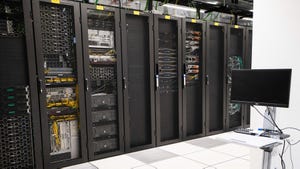How to Measure Your Cloud Success in KilowattsHow to Measure Your Cloud Success in Kilowatts
A Gartner analyst suggests kilowatts can be “the perfect progress metric” for implementation of an enterprise cloud strategy.

You’ve done the legwork. You’ve spoken with consultants, gathered stakeholder input inside your company, interviewed vendors, assessed risk – you’ve done all the due diligence needed to create your cloud strategy. You now have the blueprint for moving applications from your own data centers to the cloud: your enterprise cloud strategy.
A year into implementation of the strategy, however, your boss will likely ask how it’s going, and they’ll want some metrics that illustrate either success or failure. Will you tell them how many of the company’s applications are now running in the cloud? Will you tell them how many servers you’ve shut down in the data center, or how much storage capacity you no longer need to maintain? Will you list all the new functionality your cloud provider makes possible for your applications?
Neither of those things will paint the full picture. Perhaps you’ll be able to impress your boss by boasting that you’ve managed to take an entire data center off the company’s books as a result of the cloud effort. But what if your strategy only allows to spin down a portion of a data center?
Speaking Monday at Gartner’s IT Infrastructure, Operations & Cloud Strategies conference in Las Vegas, Douglas Toombs, a VP analyst at the research and consulting firm, suggested that you should consider kilowatts as your metric for cloud-migration progress. It abstracts away the many variables that make up the total cost of data center operations, while being simple enough for non-technical business executives to understand.
It also makes it possible to set goals and quantify success in terms of simple percentages: 30 percent, 50 percent, 80 percent, etc. If your strategy is to move 50 percent of your data processing out of your own 1MW data center, then the goal can be to get the load on the output of your data center UPS down to 500kW, Toombs explained.
That means you don’t have to figure out how much each individual server, storage, or networking device is costing you per year (and there can be several generations of each in your data center), he said. Subtract the load downstream of the UPS from the data center’s total load, and you can easily account for overhead factors like cooling. Your results can be easily audited against your utility bill. If part of your strategy is moving to colocation, your load is in your colo contract.
Crucially, using kilowatts you can easily show progress as soon as you’ve completed the first phase of migration.
Toombs stopped short of declaring kilowatts as the only correct metric for measuring progress of enterprise cloud migration strategies, leaving room for each IT shop to decide what indicators matter most to them, but suggested that in many cases it could be “the perfect progress metric.”
The bigger point was the importance of having a progress metric, period. Use any metric that suits you, but do measure the progress of your cloud initiative, he said, using a quote attributed (controversially) to Galileo Galilei: “Measure what can be measured, and make measurable what cannot be measured.”
About the Author
You May Also Like







